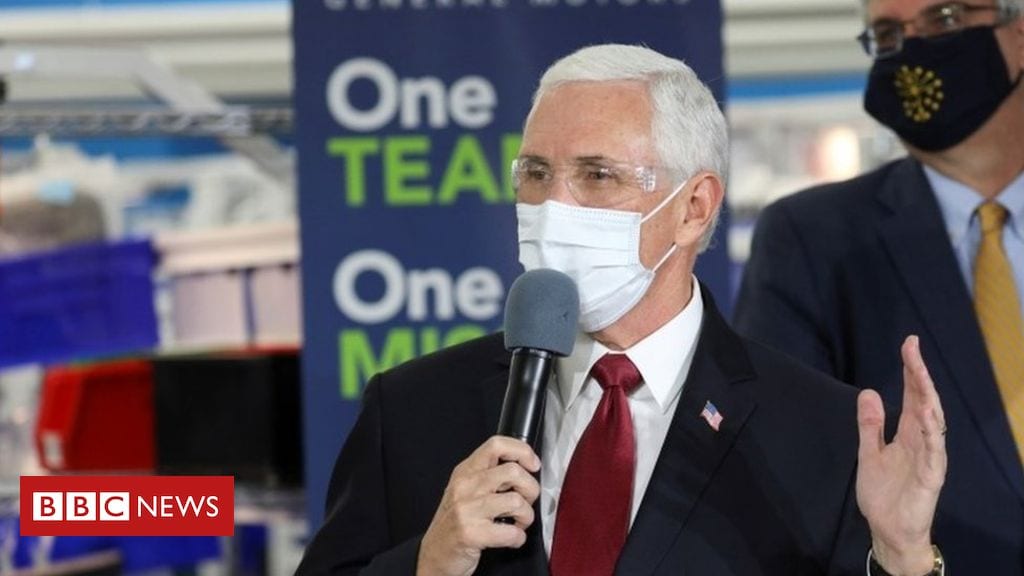[ad_1]

Image copyright
Getty Images
Negative oil prices on Monday were a “quirk”, says one market expert.
The price of US oil – which slumped to minus $37 at one point – was produced by a trading deadline and is now back close to a positive figure.
The UK oil price has been hit too, but the price of a barrel of Brent crude is now at about $23.
“Yesterday’s price action is best understood as a quirk or peculiarity of futures trading,” said analyst James Trafford of Fidelity International.
He reckons the unprecedented price movement confirms that near-term demand is very weak.
“But it isn’t cataclysmic,” he said. “We don’t see negative oil prices as a new normal, going forward.”
Oil prices have weakened sharply because of a combination of oversupply and a collapse in global demand due to the decline in economic activity cased by coronavirus lockdown measures.
What happened?
The price of oil that we see reported is actually the future price of oil. Futures are essentially contracts to deliver the physical commodity at a later date.
So when we look at oil prices, we are actually seeing the market price for future months.
As the delivery date approaches, these contracts need to be rolled over to the subsequent period.
The price of a barrel of West Texas Intermediate (WTI), the benchmark for US oil, fell into negative territory for the first time in history on Monday.
But that only related to the May contract, which was about to expire.
Traders holding the contract were unable to find buyers, because no one with the ability to take delivery wanted it.
“Nobody wants to take delivery of oil next month because there’s nowhere to store it, so the price dropped below zero,” explained Rachel Winter, associate investment director at Killik & Co.
Does that mean oil prices will fall further?
“Oil prices and associated equities in the sector will remain broadly weak over the near term,” predicted James Trafford.
He said the supply cuts recently agreed by the Opec group of oil-producing economies were not likely to be sufficient to balance the market any time soon.
Opec is believed to be looking to cut oil output immediately, rather than waiting until next month, to ease the pressure on price.
“The kind of dislocation witnessed on Monday, however much some may downplay it, points to a fundamental problem in oil markets, namely a lack of storage capacity and demand,” said Neil Wilson, senior market analyst at Markets.com.
“But it also shows the market trying to do its job, forcing the price down enough to shut production.”
Artur Baluszynski, head of research at Henderson Rowe, agreed that the effect was temporary, but warned of its implications.
“While Monday’s negative WTI futures price might have been a one-off glitch, it does confirm there is trouble ahead,” he said.
“The Covid-19 crisis is destroying the global demand for energy and without a timeline on the end of the lockdown in the developed world, the market is suffering from chronic oversupply.”



















